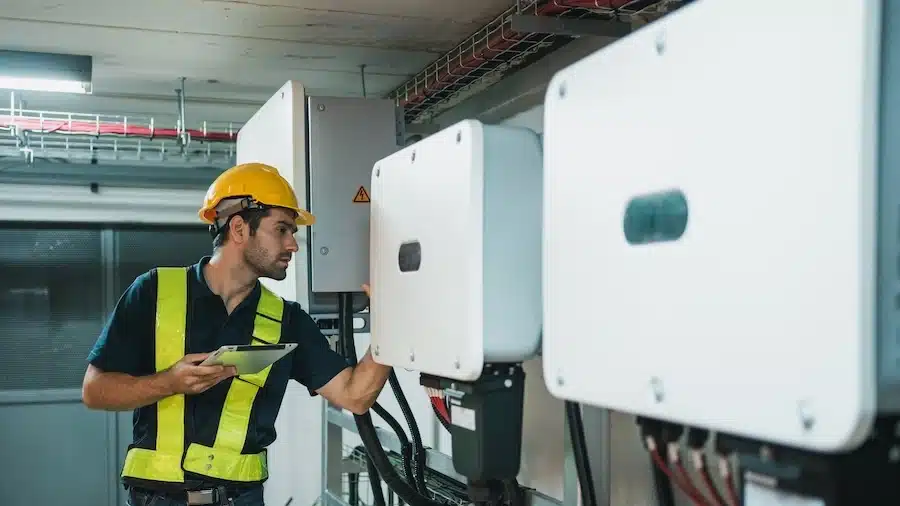We are heading for an energy crisis as fossil fuels become scarcer and harder to access, without viable alternatives to take their place. Biofuel from algae presents one of the most promising alternatives for some use-case scenarios. It is environmentally friendly and, in theory, relatively simple to produce. Here’s why we owe it to ourselves to embrace it.
How does it work?
Using only sunlight, carbon dioxide and water, Microalgae are able to accumulate fat stores in the form of oils. These can be extracted and converted into biofuels such as biodiesel,gasoline or jet fuel. The conversion processes vary in cost and complexity depending on the fuel that is being produced. Biodiesel can be produced from algal oils through transesterification, explained in this video.
There are a number of potential environmental benefits to using algae as a source of biofuel. The fuel is essentially carbon neutral because any CO2 released by its combustion was recently absorbed in order for the algae to grow. This is a vast improvement on the burning of fossil fuels which release CO2 that has been ‘locked up’ for millions of years, and therefore increase the amount of CO2 in the atmosphere at a much quicker rate than it can be removed. Although some CO2 will still be produced by the industrial processes used in production, algae biofuels can reduce CO2 emissions by up to 68% compared to traditional petroleum products according to the Algae Biomass Organisation.
As well as lower CO2 emissions, algae also has the advantage of being relatively easy to cultivate. It can be grown on marginal lands which would be unusable for other bioenergy producing crops such as corn, and can also be grown at sea in floating bags with very little environmental impact. Algae can even be grown in wastewater, i.e. water that has been polluted, and can actually clean the water by consuming nitrates and phosphates. Researchers at the Rochester Institute of Technology described cultivating algae for biofuel as ‘doubly green because algae consume nitrates and phosphates and reduce bacteria and toxins in the water.’ A recent report by the US Department of Energy on the viability of algal biofuels agreed that ‘One of the main advantages of using algae for biofuels production is algae’s ability to thrive in water unsuitable for land crops’, thus not competing with agriculture.
Best of all, algae needs relatively little land compared to other biofuel feedstock. Speaking to the Washington Post, Matt Caspari from California-based Aurora Biofuels says that, ‘If you replaced all the diesel in the U.S. with soy biodiesel, it would take half the landmass of the U.S. to grow those soybeans.’ By contrast, the US Department of Energy estimates that doing the same thing with algae would only require 15,000 square miles, or 0.42% of the country’s map. It is estimated that replacing all of the UK’s crude oil derived fuel with algal biofuel would require just 1,235 square miles of land, about 1.4% of its total land mass.
Getting on board
There seems to be a growing sense that algal fuel is worth getting behind. Last year, United Airlines announced that it would be using biofuel to help power its flights between Los Angeles and San Francisco, making it the first commercial airline to regularly do so. United Airlines estimates that the scheme will reduce pollution by 60%, compared with regular fuel. This can be achieved with only a 30/70 split between algae and cooking-oil based biofuel and traditional jet fuel, so the potential environmental benefits could be even greater if the efficiency of biofuels is improved further.
Japan has also been keen to embrace this new fuel source. In 2014 a biofuel company called Euglena Co, named by Japanese Prime Minister Shinzo Abe as his ‘favourite startup’, partnered with Isuzu to create a fleet of microalgae-fueled buses. Japan also plans to fuel commercial flights with microalgae in time for the Tokyo Olympics in 2020.
A microalgae-fuelled bus in operation in Japan.
Genetic engineering and other concerns
There are some reservations surrounding the use of algae to produce biofuels. Many people are concerned that efforts to optimise the oil-producing capability of algae will lead to widespread genetic modification of crops. These new strains could potentially spread quickly and disrupt ecosystems. Another problem, in the UK in particular, is that biofuel crops can be quite bulky and need to be transported to processing facilities. If these facilities are too far away from where they are grown, some of the benefit can be lost in transport if said transport is not fuelled sustainably
None of these problems are insurmountable though. We need new fuel sources urgently and algae is one of the most promising. The UK would be particularly well suited with its wet climate and areas of marginal land. As a society we are generally keen to embrace new energy sources. For example, 71% of the British public supports onshore wind energy production, so there’s little reason they wouldn’t also support algae-based biofuels too. Arguably, what is missing is governmental support through investment in processing facilities close to the land where algae could be grown. In fact, support and investment is needed at every stage of the process. After initial enthusiasm from the government a few years ago, their commitment to biofuels seems to have waned. The confusion surrounding the future of the Ensus biofuel plant in Teesside is a good example of the damage that an uncertain energy policy can cause. The government needs to strongly back biofuels, especially those derived from algae.
Funding the future
It is without doubt that the transition to low carbon fuels will be led by novel and emerging technologies, including biofuel from algae based feedstocks. Leading thinkers in the field (including Georgianna and Mayfield, 2012) believe that synthetic biology will play an important part in making algae-based biofuel a viable alternative to fossil fuels as well as solution over and above other sustainable alternatives. This interdisciplinary approach presents an interesting overlap between the energy and life sciences sectors and one that is supported by Innovate UK, the UK’s Government’s grant funding body.
If you are innovating in this area, your work could be funded by Innovate UK’s currently open Health and Life Sciences competition. This is far-reaching competition invites UK-based organisations to apply for a share of £15 million, for projects that ‘address challenges in health and life sciences that lead to increased agri-food productivity, quality and sustainability or improved healthcare outcomes.’
One of the key areas for this competition is ‘advanced biosciences’ which could cover the creation or improvement of organic feedstock for biofuel production, including algae. The application process can be tricky. Competition is fierce and you’ll have to convince Innovate UK not only that your project is viable, but that it is more deserving of funding than rival projects. That’s where we can help. Our experts have years of experience with Innovate UK applications and can make sure you stand the best possible chance of success.
Get in touch today and let’s get to work.





